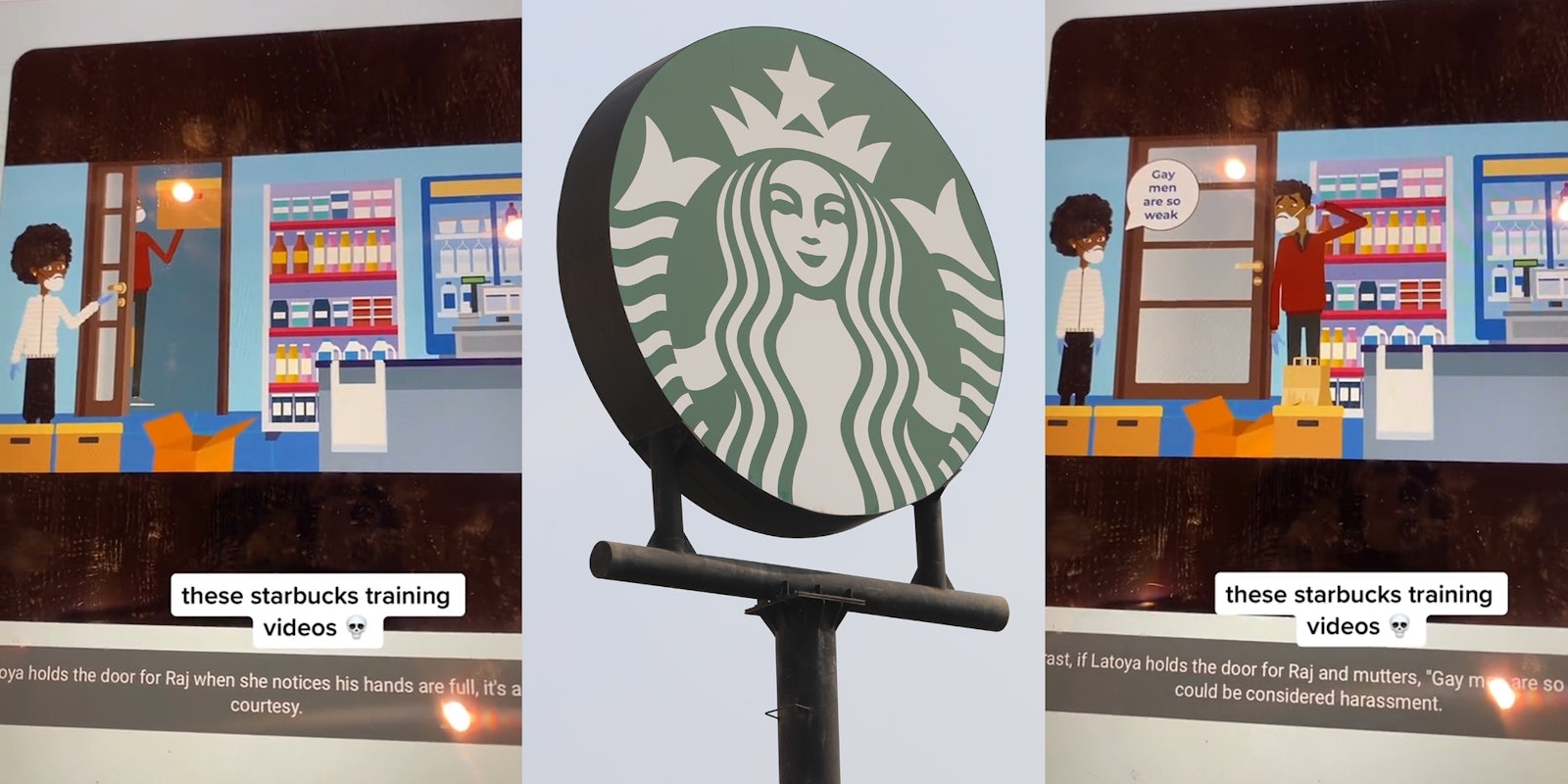Ever since 1980, when the Equal Employment Opportunity Commission released its initial guidelines on sexual harassment, companies have employed training programs to reduce incidents of harassment in the workplace.
These training sessions take different forms. At first, companies used simple videos to get the message across. Over time, these videos became interactive sessions with employees in order to encourage participation and discussion, eventually morphing into the web-based training sessions that many are familiar with today.
While harassment training sessions have good intentions, the videos they produce can, out of context, provoke interesting reactions, as TikTok user @shingshangdebu recently revealed in a video with over 2.5 million views.
@shingshangdebu i hate the new format they take so long
♬ original sound – shingshangdebu
The video purports to show a clip from a Starbucks harassment training video. In the clip, two employees named Latoya and Raj are seen.
“[If] Latoya holds the door for Raj when she notices his hands are full, it’s a common courtesy,” the voiceover says. “By contrast, if Latoya holds the door for Raj and mutters, ‘Gay men are so weak,’ that could be considered harassment.”
Over the video, @shingshangdebu laughs and simply says, “Bruh.”
At first, commenters were quick to point out the lack of nuance in the video.
“Is Latoya friends with Raj? Is she queer? Cause me and my queer friends absolutely talk to each other like that,” noted a user.
“This is how we all talk to each other at my store…but we’re all queer,” echoed another.
Others questioned the motivation of the videos overall.
“Why are training videos always an excuse to let out the insults they been sitting on,” wrote one user.
“Harassment trainings are always so out of pocket,” noted a second.
Part of the awkwardness of harassment training videos may come down to the motivations for making them.
According to a 2016 study by the EEOC, while sexual harassment videos were initially made to benefit employees, trainings today are “too focused on simply avoiding legal liability”—and are ineffective at reducing rates of harassment.
“…By the mid-1990s, anti-harassment training was being increasingly used as a form of legal protection for companies,” writes Rhana Natour, citing the data of Elizabeth Tippett, an associate professor at the University of Oregon School of Law.
“In 1998, the Supreme Court’s ruling in Faragher v. City of Boca Raton, a case that centered around a lifeguard who accused supervisors of offensive behavior, set a precedent that an employer can escape liability for sexual harassment claims by taking ‘actionable steps’ to prevent and promptly respond to sexual harassment claims,” explains Natour.
“It was after this decision that courts began to give employers credit for simply adopting trainings — regardless of their effectiveness,” Natour details, citing law professor at the University of California at Berkeley Lauren Edelman.
For the time being, TikTokers will continue to enjoy the bizarreness of training videos.
“The training videos are ALWAYS wild,” shared a user.
“I DIDNT GET TO WATCH THIS??? complaining to corporate,” joked a second.
The Daily Dot reached out to Starbucks via email and @shingshangdebu via Instagram direct message.



